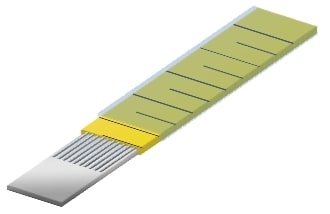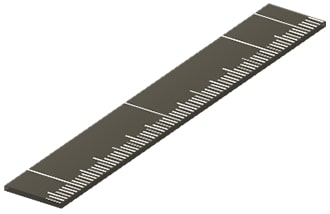Easy Way to Find 332 on Measuring Tape

Contents:
- What is the tape measure and its structure;
- Classes of Tape Measures;
- Types of the tape measures and their materials;
- How to read an imperial units tape measure;
- How to read a metric tape measure;
- Safety Tips
Tape measure is a device that probably lies in the toolbox of each renter or homeowner. It is an affordable and compact device that is used in repairing or building at home or work. On the other hand, tape measure is not as easy to work with as it seems for the first time. There are two kinds of measurement that are globally used and not everyone understands how to read tape measures correctly and accurately. That's why it is important to understand the function, structure and types of the tape measures.
What is the tape measure and its structure
A tape measure is a special equipment to measure the size of the object or distance between objects. The tape is marked in inches and feet, but some tapes are marked in millimeters, centimeters and meters. If you know the structure of the device, your work will be easier and faster:

1. Case is a body of tape measure. The most durable types are made from metal, but plastic is more affordable.
Cases can be closed and open reel types.
Closed case types are protected by a compact case. Such tape measures are perfect devices for those who worry about the tape not being damaged.
Open reel case types have the blade that is wrapped around a spindle. Such tapes help the user to make long measurements, that's not possible with a closed case tape.

2. Thumb Lock is a button that helps you to stop the tape measure by pressing the thumb lock down.

3. Blade is a measurement tape.

4. Hook is used for measuring when you get it at the end of a device or item you want to measure.
Hooks are not the same on every tape measure.
Cheaper tapes usually have a small, flat hook that can be hooked over an object to read the measurement above.
More expensive tapes have hooks that can be hooked onto, above, and even below the object.
There also can be a magnetized hook that allows quick and easy measuring by one person, especially for those who work with metals.
Open reel tapes have a hook that can be anchored into the ground or hooked over an object.

5. Hook Slot is made to hang the tape measure onto a nail or screw.

6. Belt Clip is a good part of the tape measure when you need to fit it on your uniform's pocket. They can also be as
Classes of Tape Measures
Tape measures are divided into 4 classes that determine their quality of accuracy.
Class IV includes tapes such as fiberglass open reel tapes that have the lowest level of accuracy.
Class III manufactures rarely, as manufacturers try to improve the quality of their device to achieve Class II.
Class II includes a major part of everyday use tapes. Such tape measures should be accurate to +/- 2.3mm. Brands such as Bahco, Beta and so on, manufacture class II tape measures.
Class I determine the most accurate tape measures. As compared to class II, class I is accurate to +/- 1.1mm and they are perfect for engineering professions or for those who need a maximum accuracy in their measurements.
Types of the tape measures and their materials
There are many kinds of tape measures that can make your work better and easier:
| Standard Tape Measure has a standard structure as it was described above. | ||||
| Laser Tape Measure is similar to traditional tape measure. They're used to calculate length, width and heights. When you point the laser to the wall or something else, press the button and the tape measure calculates the distance and shows it on the screen. | |||
| Auto-Lock Measuring Tape has a locking mechanism that automatically keeps the blade locked whatever length you extend it to. If you want to shorten the blade, just press the button. | ||||
| Conduit Tape Measure or Long tape is designed to go the distance. The process is facilitated by measuring marks that are printed on each foot of the tape. | ||||
| Walking Tape Measure measures horizontal and vertical surfaces quickly and easily. Heavy-duty wheel is long-lasting. Convenient support keeps the tool upright when not in use. Telescoping handle adjusts easily up to correct working height. |
There are three most used materials for tape measures. Steel is a durable, practical and economical material. Steel tapes can be lacquered and nylon covered that depend on the working environment where the device is used. Stainless steel is a good material for those who work in a wet environment, because it's not corrode. Fiberglass is used for the long tape measures due to its tensile strength and flexibility.
| | |
| *Lacquered steel tape is covered by an anti-corrosion phosphorus layer that is then painted yellow or white color. The blade is coated with matt polyester lacquer that protects from the contact with most solvents. | *Nylon covered steel tape covered by an anti-corrosion phosphorous layer and then painted yellow. The blade is coated with an extra-sick nylon membrane to make the tape really durable. It withstands contact with a majority of chemicals, solvents and liquids. |
| | |
| *Fiberglass tape threads cast in plastic. It can withstand contact with the majority of chemicals, liquids and temperature fluctuations. A fiberglass tape is lighter and more flexible to work with. | *Stainless steel tape is suitable for use in the working environment where solvents and chemicals are heavily used. |
Tape measures are available in both imperial units (inches and feet) and in metric(cm and m) units. Following the steps below you can read the tape measure with ease.
How to read an imperial units tape measure
Step 1: On the standard tape measure the biggest black numbers are inch markings. Find and read the markings.
Step 2: The length of the mark is equal to the increments decrease. For instance, ½ is bigger than ¼ and ¼ is bigger than ⅛.

Step 3: The space between two biggest markings is equal to 1 inch. One half inch is ½; ¼ is half of ½; ⅛ is half of ¼; 1/16 is half of ⅛.
| | |
Step 4: Measure the length of the device or item you need to measure. Read the length. For example, in the picture below, you have a measurement that is between the inch marks. The measurement between inch mark 2 and inch mark 3 is 1 full inch. Then add the space between the inch marks 3 and 4 that is ¼ to the length of one inch. For instance, 1 inch + ¼ inch is 1 ¼ inch.

Step 5: If the measurement is less than one inch. For instance, the picture below shows you the length from the inch mark to an unlabeled marking. We understand that it's more than ¾ and less than 1 full inch. The marking is between ¾ (6/8) and ⅞. The measurement is half of ⅛ that means that it is 1/16. Remake ¾ to 12/16 and add 12/16 + 1/16 that is 13/16. We got the length we wanted to measure.

How to read a metric tape measure
Step 1: In the picture below you can see a metric tape measure. The measurements are in centimeters (cm) and millimeters (mm).

Step 2: In 1cm there are 10mm (shown between the pace of each cm) and in 1m there are 100cm.

Step 3: Let's read the measurement. For instance you can see the picture below. The 1st small mark after the 4cm point is 1mm. To understand the measurement you need a 4cm remake to 40mm and add 1mm. We got 41mm or 4,1cm. The next small mark will measure 42mm (4,2cm) and the other 43mm (4,3cm).

Safety Tips
Never leave the blade to return uncontrolled at full speed. Maybe it seems convenient and quick to return the blade in such a way, but NO. It can be very dangerous for many people, especially for kids if you use the tape measure at home. Fast return of the tape measure can injure your fingers or face (especially eyes).
In addition some tape measures with steel blades may have sharp edges. That's why when returning the tape, you can sharpen yourself or even get a cut.
Be Careful!
Source: https://megadepot.com/resource/how-to-read-a-tape-measure







0 Response to "Easy Way to Find 332 on Measuring Tape"
Post a Comment